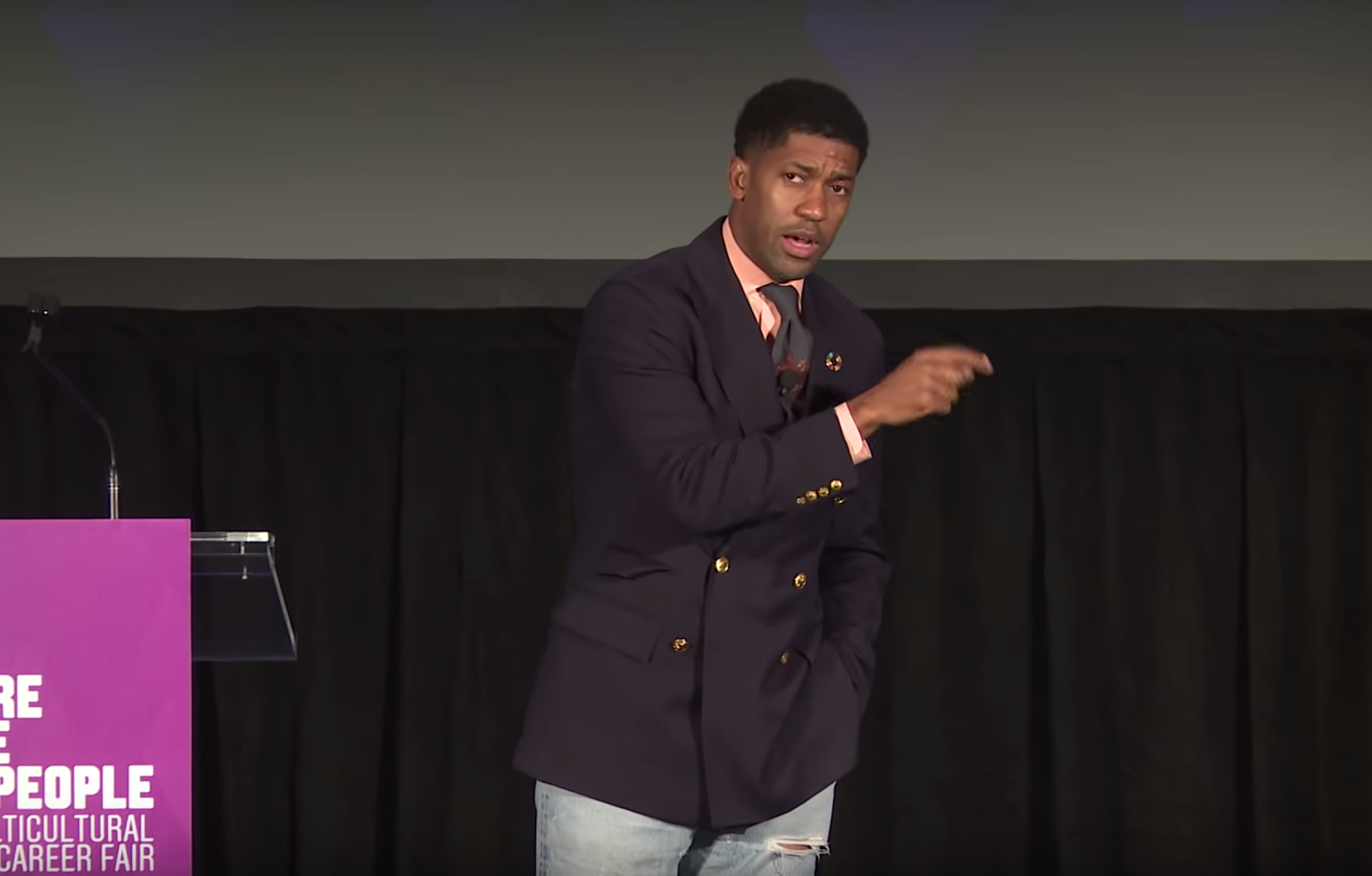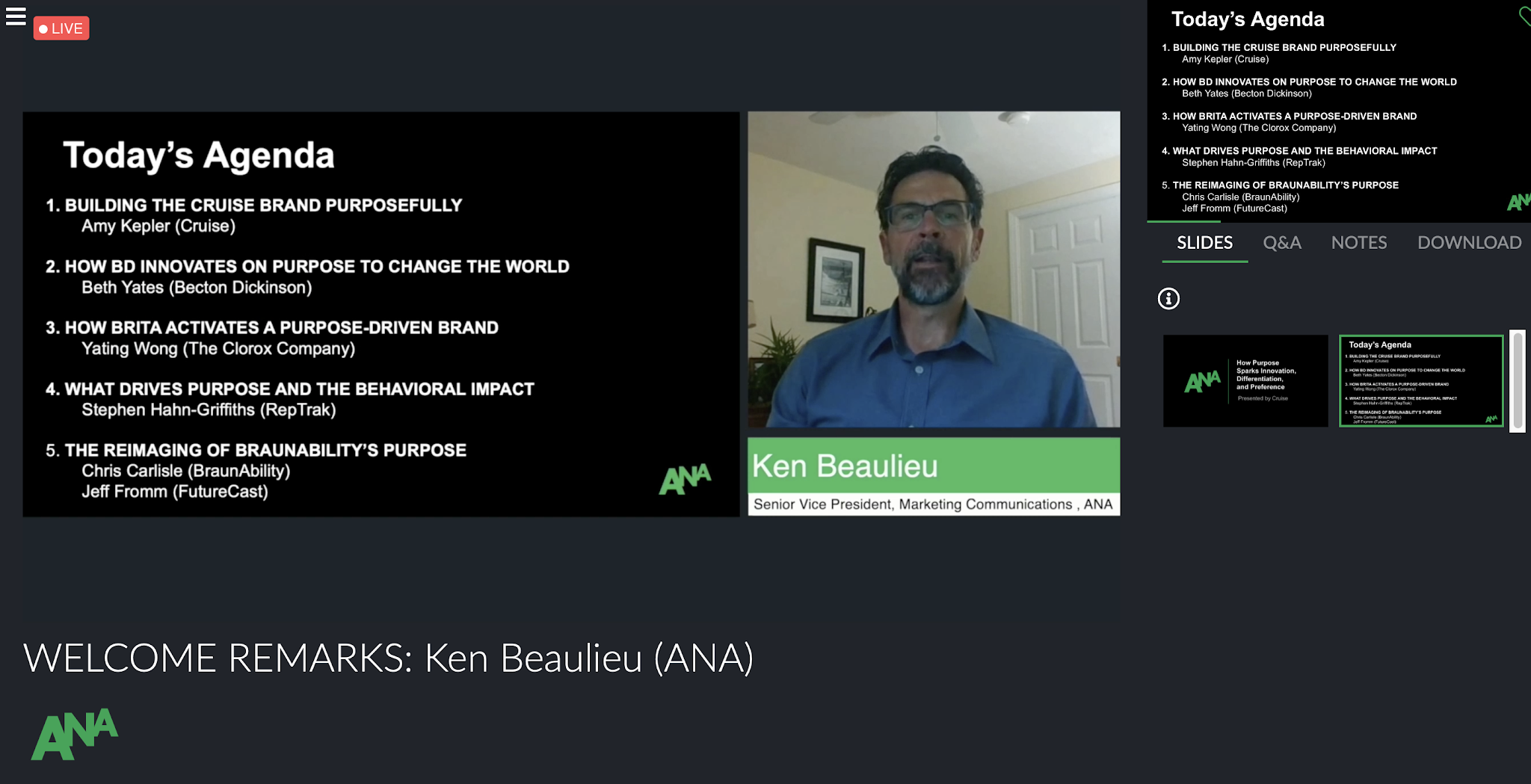“We’re Not Gonna Take It”: An Analysis of The One Club’s Here Are All the Black People 2018 and the Industry’s Growing Stance on Increasing Racial Equity
The topic of diversity in communications is one we’ve been having for quite some time now. Panel after panel, initiative after initiative, and yet progress seems pretty dismal. So I'm sure you're probably wondering, what was different about this year's Here Are All the Black People?
With the momentum of the ‘Me Too’ and ‘Time’s Up’ movements, it became pretty clear that society was catching up to the impact of the “old boys club” leadership model that continues to reign over many industries, including communications, entertainment, and media.
“I honestly believe we're living in the golden age of disrespect”
“I’ve been told countless times, you’re pretty...for a black woman”
“I have seen many men turn a blind eye to sexual harassment, fearing the consequence of blowing the whistle”
The overall sentiment of the event was, “We’re done playing nice here.” Tough times calls for tough measures, and if we want to see change, we all have to be a bit more aggressive in making it happen. This feeling was evident in every facet of this year’s HAATBP. It echoed through every breakout panel session and through every guest speaker.
Fonzworth Bentley began his opening keynote delving into his unconventional way of breaking through the media and entertainment industries as a young man of color with no connections. His words inspired the crowd as he spoke about “the art of the finesse” in social settings and disrupting the norm to get noticed. It occurred to me that his words were actually a guide. A guide for the next generation to push through communications despite today’s large gap in racial equity.

Each breakout panel had a different way of approaching various social issues that plague our industry today. Various panels covering topics like ageism, unequal pay for equal work, sexism, and lack of advocacy in the workplace. Two of the most buzzworthy breakout sessions were Creativity Abounds: Career Paths And Entry Points Beyond Traditional Advertising featuring Love Malone from The Gradient and Ryan Robertson, brand director at Diageo and Me Too, Times Up, Now What with Kat Gordon of the 3% Movement and Golin’s Matt Neale. Neither of these sessions held back when it came to exposing the good, bad, and ugly going on in the industry. What both of these panels did exceptionally well was provide immediate next steps to help solve many of the issues we’re currently facing.

In Creativity Abounds, Love Malone introduced the audience to The Gradient. The Gradient’s goal is centered around pairing industry talent in the creative realm with Fortune 500 companies seeking entry and mid level creatives. I couldn’t help but think to myself “Finally, a solution that actually connects talent and employers!” Malone is certainly a pioneer in a realm that isn’t as saturated as it should be, given the lack of diversity in this industry.

When Matt Neale first mentioned the term “manbassador” in the panel Me Too, Times Up, Now What, I couldn’t help but chuckle a bit. And then I started to learn about the initiative and what it meant. Not just holding men, but holding every person in the workplace accountable was very impressive to me. The “manbassador” boards that Matt passed around were game-style like posters that incentivized advocating for fellow employees in multiple situations. Much like with Love Malone, it seemed like industry leaders were actually providing solutions, no matter how small or simple, to help push the needle forward in making progressive change.
In addition to the disruptors among the panel sessions, I found the afternoon keynote to be insightful, refreshing, and full of the same progressive fervor. Ibra Ake, creative director and producer of Childish Gambino’s This is America music video provided a first-hand look at his process and motivations behind the iconic video. Panel moderator J.D. Michaels stated it best when he said, “There were two pieces of film that caught my attention like no other this year. The first was P&G’s The Talk and the second was This is America.” I couldn’t agree more and admired the fact that The One Club was showcasing this creative director. They easily could’ve featured the creative director of the latest Tide or Nike campaign, but they instead decided to feature Ake because of the compelling, timely, and honest nature of his work.
At the reception after the event, audience members and panelists alike drank wine and chatted. But this time, it wasn’t over the latest industry gossip or which agency is hiring. The conversation was largely focused on next steps to push this change forward beyond the event and even beyond The One Club. We still have a lot of work to do before we achieve an equal footing in the communications industry, but this year’s Here Are All the Black People proved that we are definitely making strides in the right direction.
With the momentum of the ‘Me Too’ and ‘Time’s Up’ movements, it became pretty clear that society was catching up to the impact of the “old boys club” leadership model that continues to reign over many industries, including communications, entertainment, and media.
“I honestly believe we're living in the golden age of disrespect”
“I’ve been told countless times, you’re pretty...for a black woman”
“I have seen many men turn a blind eye to sexual harassment, fearing the consequence of blowing the whistle”
The overall sentiment of the event was, “We’re done playing nice here.” Tough times calls for tough measures, and if we want to see change, we all have to be a bit more aggressive in making it happen. This feeling was evident in every facet of this year’s HAATBP. It echoed through every breakout panel session and through every guest speaker.
Fonzworth Bentley began his opening keynote delving into his unconventional way of breaking through the media and entertainment industries as a young man of color with no connections. His words inspired the crowd as he spoke about “the art of the finesse” in social settings and disrupting the norm to get noticed. It occurred to me that his words were actually a guide. A guide for the next generation to push through communications despite today’s large gap in racial equity.
Each breakout panel had a different way of approaching various social issues that plague our industry today. Various panels covering topics like ageism, unequal pay for equal work, sexism, and lack of advocacy in the workplace. Two of the most buzzworthy breakout sessions were Creativity Abounds: Career Paths And Entry Points Beyond Traditional Advertising featuring Love Malone from The Gradient and Ryan Robertson, brand director at Diageo and Me Too, Times Up, Now What with Kat Gordon of the 3% Movement and Golin’s Matt Neale. Neither of these sessions held back when it came to exposing the good, bad, and ugly going on in the industry. What both of these panels did exceptionally well was provide immediate next steps to help solve many of the issues we’re currently facing.
In Creativity Abounds, Love Malone introduced the audience to The Gradient. The Gradient’s goal is centered around pairing industry talent in the creative realm with Fortune 500 companies seeking entry and mid level creatives. I couldn’t help but think to myself “Finally, a solution that actually connects talent and employers!” Malone is certainly a pioneer in a realm that isn’t as saturated as it should be, given the lack of diversity in this industry.
When Matt Neale first mentioned the term “manbassador” in the panel Me Too, Times Up, Now What, I couldn’t help but chuckle a bit. And then I started to learn about the initiative and what it meant. Not just holding men, but holding every person in the workplace accountable was very impressive to me. The “manbassador” boards that Matt passed around were game-style like posters that incentivized advocating for fellow employees in multiple situations. Much like with Love Malone, it seemed like industry leaders were actually providing solutions, no matter how small or simple, to help push the needle forward in making progressive change.
In addition to the disruptors among the panel sessions, I found the afternoon keynote to be insightful, refreshing, and full of the same progressive fervor. Ibra Ake, creative director and producer of Childish Gambino’s This is America music video provided a first-hand look at his process and motivations behind the iconic video. Panel moderator J.D. Michaels stated it best when he said, “There were two pieces of film that caught my attention like no other this year. The first was P&G’s The Talk and the second was This is America.” I couldn’t agree more and admired the fact that The One Club was showcasing this creative director. They easily could’ve featured the creative director of the latest Tide or Nike campaign, but they instead decided to feature Ake because of the compelling, timely, and honest nature of his work.
At the reception after the event, audience members and panelists alike drank wine and chatted. But this time, it wasn’t over the latest industry gossip or which agency is hiring. The conversation was largely focused on next steps to push this change forward beyond the event and even beyond The One Club. We still have a lot of work to do before we achieve an equal footing in the communications industry, but this year’s Here Are All the Black People proved that we are definitely making strides in the right direction.


